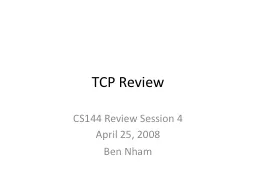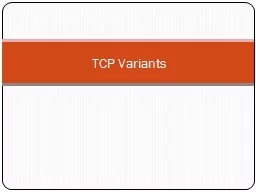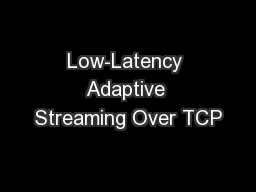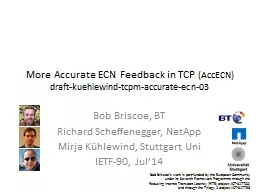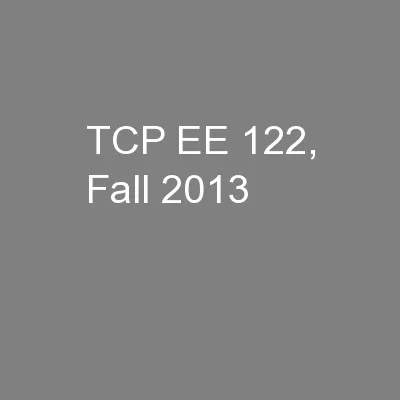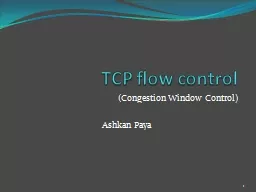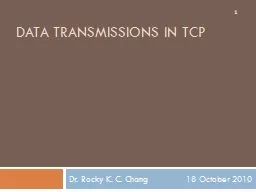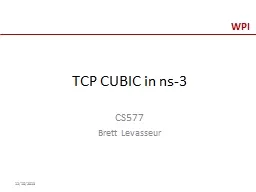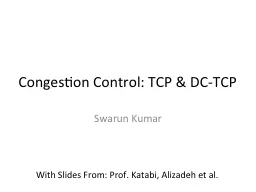PPT-TCP Review
Author : calandra-battersby | Published Date : 2017-06-09
CS144 Review Session 4 April 25 2008 Ben Nham Announcements Upcoming dates Wed 430 Lab 3 due Lab 4 out Fri 52 Midterm Review Mon 55 Inclass midterm Wed 514 Lab 4
Presentation Embed Code
Download Presentation
Download Presentation The PPT/PDF document "TCP Review" is the property of its rightful owner. Permission is granted to download and print the materials on this website for personal, non-commercial use only, and to display it on your personal computer provided you do not modify the materials and that you retain all copyright notices contained in the materials. By downloading content from our website, you accept the terms of this agreement.
TCP Review: Transcript
Download Rules Of Document
"TCP Review"The content belongs to its owner. You may download and print it for personal use, without modification, and keep all copyright notices. By downloading, you agree to these terms.
Related Documents

